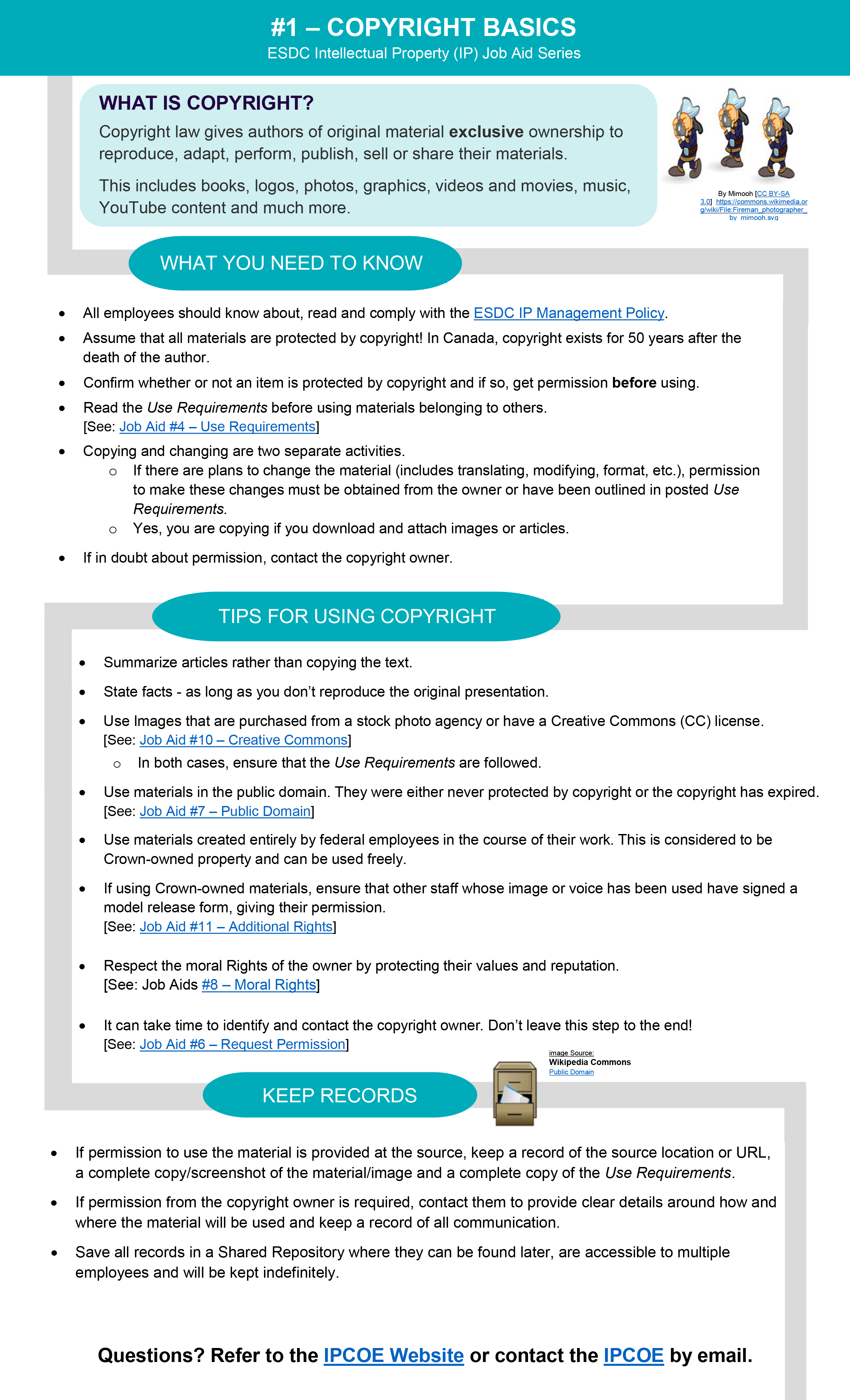Copyright Basics
ESDC Intellectual Property (IP) Job Aid Series
ESDC Intellectual Property (IP) Job Aid Series
Long Description
What Is Copyright
Copyright law gives authors of original material exclusive ownership to
reproduce, adapt, perform, publish, sell or share their materials.
This includes books, logos, photos, graphics, videos and movies, music,
YouTube content and much more.What You Need To Know
- All employees should know about, read and comply with the ESDC IP Management Policy.
- Assume that all materials are protected by copyright! In Canada, copyright exists for 50 years after the death of the author.
- Confirm whether or not an item is protected by copyright and if so, get permission before using.
- Read the Use Requirements before using materials belonging to others.
- [See: How to Interpret the Use Requirements Job Aid.]
- Copying and changing are two separate activities.
- If there are plans to change the material (includes translating, modifying, format, etc.), permission to make these changes must be obtained from the owner or have been outlined in posted Use Requirements.
- Yes, you are copying if you download and attach images or articles.
- If in doubt about permission, contact the copyright owner.
Tips For Using Copyright
- Summarize articles rather than copying the text.
- State facts - as long as you don't reproduce the original presentation.
- Use Images that are purchased from a stock photo agency or have a Creative Commons (CC) license.
- [See: Creative Commons Job Aid.]
- In both cases, ensure that the Use Requirements are followed.
- Use materials in the public domain. They were either never protected by copyright or the copyright has expired. [See: Public Domain Job Aid.]
- Use materials created entirely by federal employees in the course of their work. This is considered Crown-owned property and can be used freely.
- If using Crown-owned materials, ensure that other staff whose image or voice has been used have signed a model release form, giving their permission.
- [See: Additional Rights Job Aid.]
- Respect the moral Rights of the owner by protecting their values and reputation.
- [See: Moral Rights Job Aid.]
- It can take time to identify and contact the copyright owner. Don't leave this step to the end!
- [See: Request Permission Job Aid.]
Keep Records
- If permission to use the material is provided at the source, keep a record of the source location or URL, a complete copy/screenshot of the material/image and a complete copy of the Use Requirements.
- If permission from the copyright owner is required, contact them to provide clear details around how and where the material will be used and keep a record of all communication.
- Save all records in a Shared Repository where they can be found later, are accessible to multiple employees and will be kept indefinitely.
Questions?
Refer to the Intellectual Property Centre of Excellence (IPCOE)
or contact the IPCOE by e-mail at: NC-ASSETS-IP-POLICY-POLITIQUES-BIENS-PI-GD.
